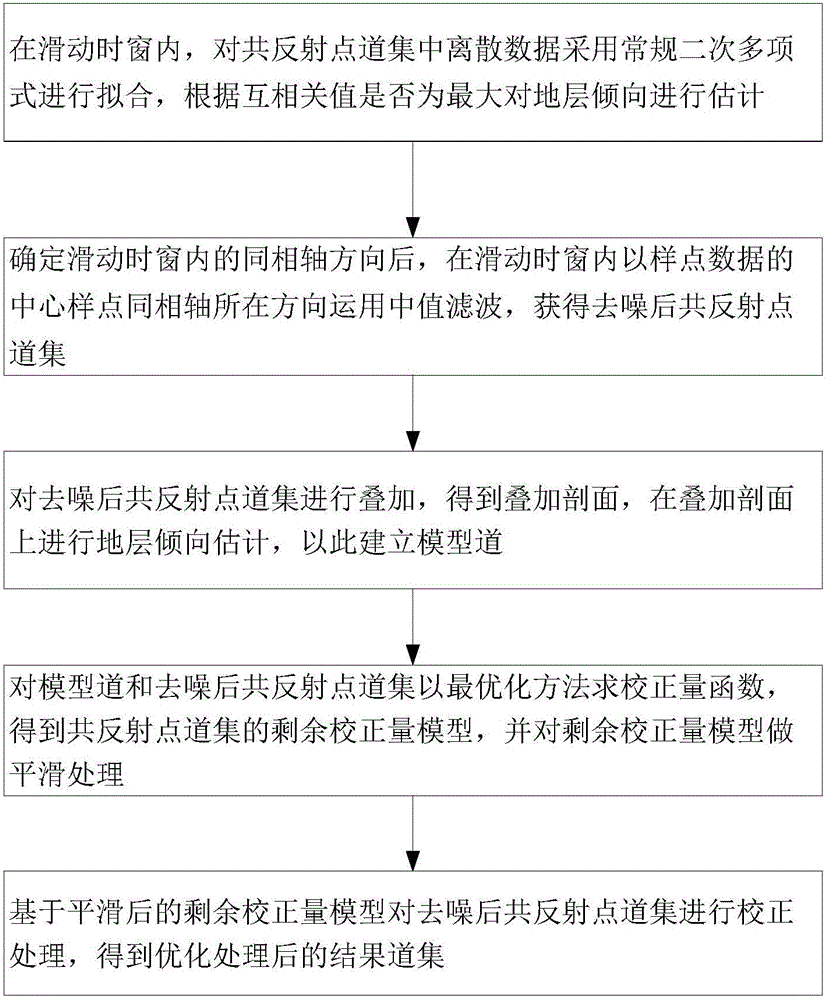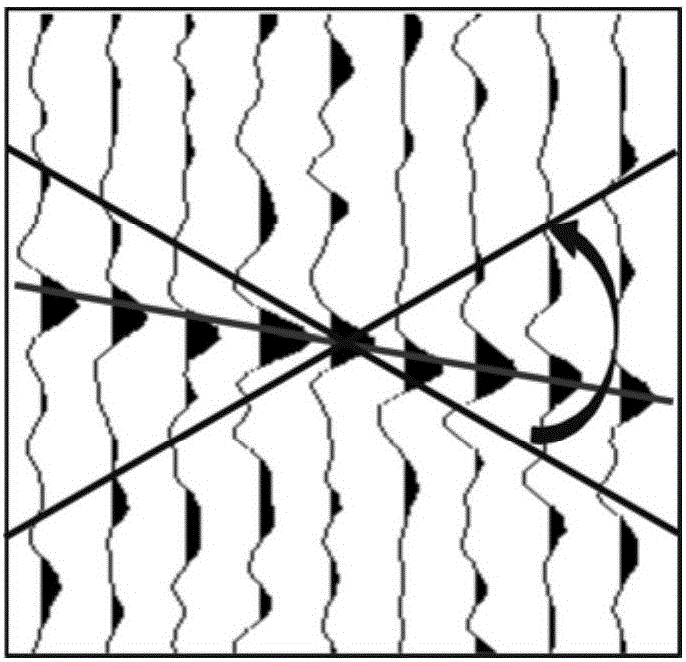Common reflection point gather optimized processing method and system
A common reflection point gather and processing method technology, applied in the field of seismic inversion imaging processing, to achieve strong information correlation, improve overall quality, and improve the effect of signal-to-noise ratio
- Summary
- Abstract
- Description
- Claims
- Application Information
AI Technical Summary
Problems solved by technology
Method used
Image
Examples
specific Embodiment 1
[0098] The specific implementation steps of specific embodiment 1 of the present invention are:
[0099] Step 1: Use conventional quadratic polynomials to analyze seismic data (S in the cross-correlation objective function k , S j That is, the actual discrete seismic data, the fitting relation t=t 0 +c 1 x+c 2 x 2 The obtained time t is the discrete-time sampling point corresponding to the seismic data S(t)) for fitting to estimate the stratum dip, such as image 3 As shown, it is a schematic diagram of the stratum dip estimated by the discrete scanning method of the present invention. In the calculation sliding time window, the local event satisfies the following quadratic fitting polynomial:
[0100] t=t 0 +c 1 x+c 2 x 2 Formula 1)
[0101] Among them: x is the relative track number of the fitting center track, x has positive and negative directions, and its value is x=-M,-M+1,...,-1,0,1...,M-1 , M, M is half of the number of fitting channels, t 0 is the time to...
PUM
 Login to View More
Login to View More Abstract
Description
Claims
Application Information
 Login to View More
Login to View More - R&D
- Intellectual Property
- Life Sciences
- Materials
- Tech Scout
- Unparalleled Data Quality
- Higher Quality Content
- 60% Fewer Hallucinations
Browse by: Latest US Patents, China's latest patents, Technical Efficacy Thesaurus, Application Domain, Technology Topic, Popular Technical Reports.
© 2025 PatSnap. All rights reserved.Legal|Privacy policy|Modern Slavery Act Transparency Statement|Sitemap|About US| Contact US: help@patsnap.com



